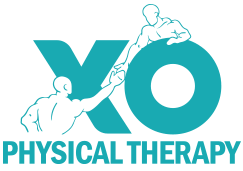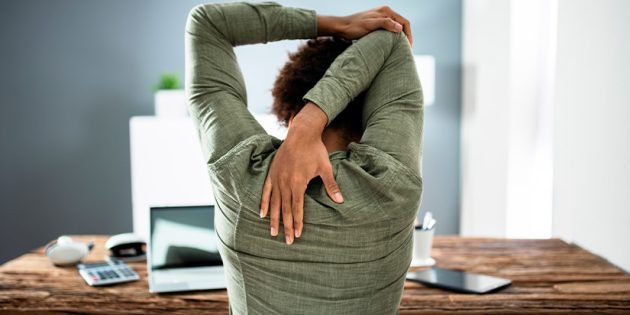Physical Therapy for the Holidays: Managing Stress and Pain

The holiday season is a time of joy, and togetherness, but it can also be a source of stress and pain for many. From the hustle and bustle of shopping to the demands of social gatherings, the year-end festivities can take a toll on our mental and physical well-being.
As a physical therapy clinic specializing in rehabilitation, we’re here to guide you through a journey of stress and pain management, offering insights and practical tips for physical therapy for holiday season.
Physical Therapy for Holidays
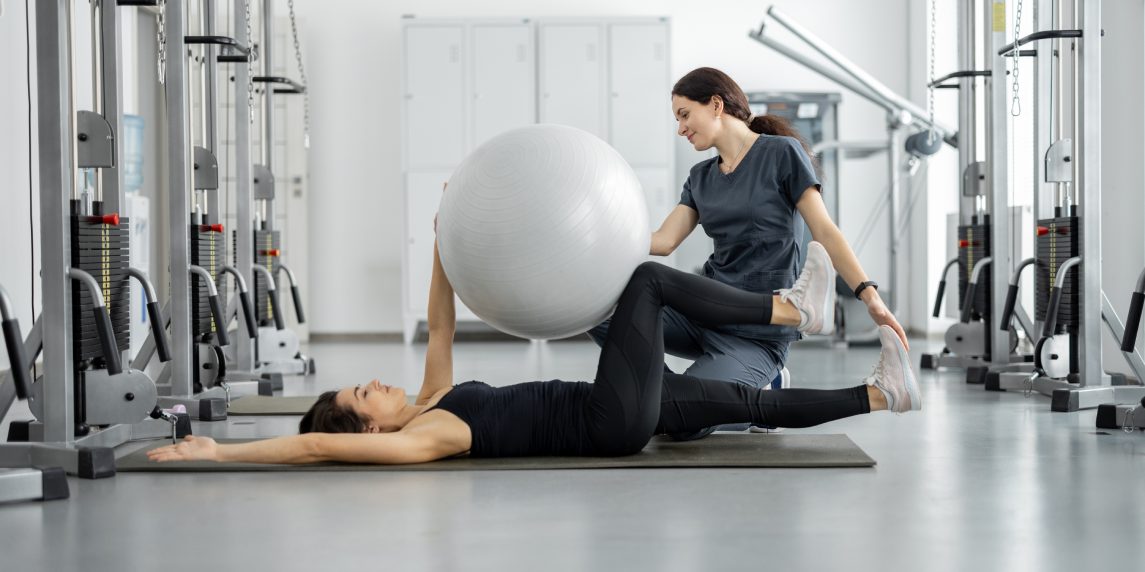
Postural Drainage
The holiday season also means we’re heading into the winter. And winter brings about mucus in many people. The good news is that easy physical therapies can help you manage mucus at home. One of them is postural drainage.
Postural drainage involves tilting your position to clear the excess mucus in the airway, thereby relieving breathing issues.
You can practice the postural drainage technique on a chair, on an exercise ball, or simply by lying on your side. All you need to do is sit upright on the chair and slowly lean forward at an angle of 30 degrees. Extend your leg backward and rest your elbows on the walls or the bed. Hold the position and let the mucus spill from the lung’s posterior segment.
You can also lie on your side and perform this therapy. For this, start by lying on the right side and place pillows under your hips. Your hips need to be at a higher position than your lungs. This will cause the mucus to flow outwards due to gravity.
Correct Breathing Technique
Something as simple as breathing can help you manage stress and pain at home. You don’t need to put yourself on drugs or bitter syrups.
Diaphragmatic breathing exercises, also known as deep breathing, can activate the body’s relaxation response, promoting a sense of calm and reducing muscle tension.
This technique involves using the diaphragm, a large muscle between the chest and abdomen, to facilitate optimal lung expansion. This type of breathing is often more efficient and calming than shallow chest breathing.
- Start by finding a quiet and comfortable place to sit or lie down. You can sit on a chair with your feet flat on the floor or lie down on your back with your knees bent.
- Breathe in slowly and deeply through your nose. Focus on allowing your abdomen to expand, pushing your hand on your abdomen outward while keeping the hand on your chest relatively still.
- Lastly, exhale slowly through your mouth or nose, allowing your abdomen to fall inward. Imagine that you are gently pulling your belly button toward your spine as you exhale.
The best part is you can do this anywhere, whether at the shopping center or your parent’s house. Do this for 20-30 minutes daily and increase the duration from then on.
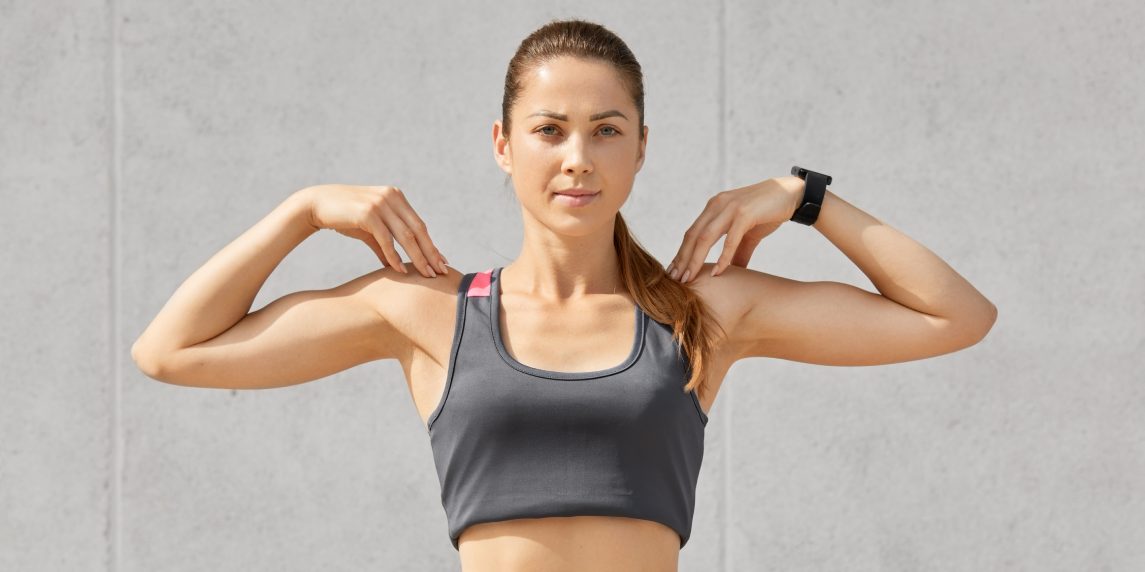
Mindfulness
Mindfulness may not seem like physical therapy per se; it resembles more of a mental therapy. But because of the profound impact mindfulness has on physical health, it’s worth incorporating into your practice during the holiday season.
At the basic level, mindfulness is about mindful of your thoughts and emotions. Your emotions, especially the negative ones, can lead you astray and elevate stress.
Practicing mindfulness involves cultivating a heightened awareness of the present moment without judgment. It’s about paying attention to your thoughts, feelings, and sensations without getting caught up in them.
The best way is to focus on your breath. So, when doing your diaphragmic breathing exercise, focus on your breath. Notice the sensation of each inhale and exhale. You can focus on the rise and fall of your chest or the feeling of air passing through your nostrils.
Replicate the same level of consciousness in other tasks.
Posture Awareness
Posture awareness refers to the conscious attention and maintenance of one’s body position while sitting, standing, or moving. It involves being mindful of the alignment of the spine, shoulders, and hips to ensure a balanced and supported posture.
This awareness is crucial for maintaining optimal musculoskeletal health and preventing back pain, neck strain, and muscle imbalances. Furthermore, posture awareness contributes to enhanced respiratory function and circulation. When the body is in alignment, the lungs can fully expand, allowing for optimal oxygen intake.
There are certain exercises that can improve your posture. But at the basic level, you should sit upright, switch between sitting positions, keep your shoulders relaxed, don’t cross your legs, and briefly walk in between.
Progressive Muscle Relaxation
Progressive Muscle Relaxation (PMR) is a relaxation technique developed by physician Edmund Jacobson in the early 20th century. It involves systematically tensing and relaxing different muscle groups to promote physical and mental relaxation. The underlying principle is that the release of muscular tension can lead to a corresponding release of mental stress.
To start with PMR, find a quiet space and sit or lie down without interruption. Take a few deep breaths to initiate a state of relaxation. Inhale slowly through your nose, hold for a moment, and exhale slowly through your mouth. Start with a specific muscle group, such as your hands or shoulders. Tense the muscles in that area as tightly as possible for about 5-10 seconds. Focus on the sensation of tension. Next, release the tension in the muscles and allow them to relax completely. Pay attention to the sensations of warmth and the contrast between tension and relaxation.
Complete the session by bringing your attention to your entire body, imagining a wave of relaxation flowing from head to toe. Enjoy the overall sense of calmness and release.
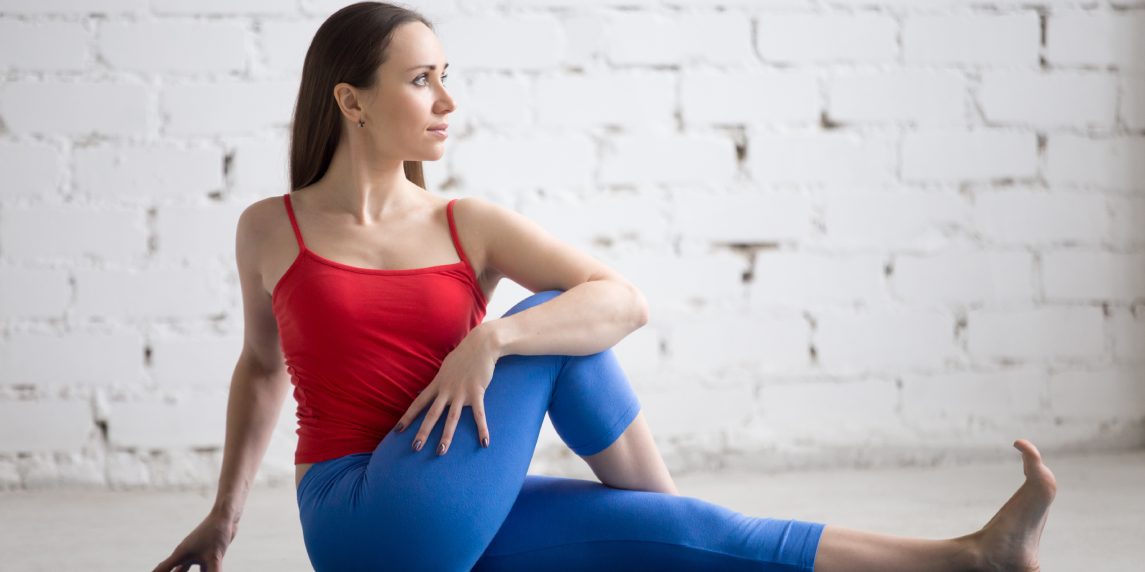
Joint Mobility Exercises
During the holiday season, either due to overbearing or inactivity, our joints can take a beating. To ensure proper joint health, incorporate a few joint mobility exercises. These exercises are movements that aim to improve the range of motion, flexibility, and overall health of the joints.
Now, let’s explore some joint mobility exercises that target various parts of the body:
Neck Circles
- Sit or stand with a straight spine.
- Gently tilt your head forward, bringing your chin towards your chest.
- Slowly rotate your head in a circular motion, moving clockwise and then counterclockwise.
- Repeat for 30 seconds in each direction.
Shoulder Rolls
- Stand with your feet shoulder-width apart.
- Roll your shoulders forward in a circular motion for 15 seconds.
- Reverse the motion and roll your shoulders backward for another 15 seconds.
Wrist Flexor and Extensor Stretches
- Extend your right arm forward, palm facing down.
- Use your left hand to gently press down on the fingers of your right hand.
- Hold for 15-30 seconds.
- Repeat with the other hand, this time with the palm facing up.
Spinal Twists
- Sit or stand with your spine straight.
- Twist your torso to one side, bringing your opposite hand to the outside of the knee.
- Hold for 15-30 seconds.
- Repeat on the other side.
Hip Circles
- Stand with your feet shoulder-width apart.
- Place your hands on your hips.
- Circle your hips clockwise for 15 seconds, then counterclockwise for another 15 seconds.
You can get various diseases treated by physical therapy. The best part, these exercises are suitable for everyone. But remember to consult with a healthcare professional or physical therapist before starting any new exercise program, especially if you have existing health conditions or concerns. If that’s the case, contact us, and we can provide personalized recommendations based on your individual needs and circumstances.

